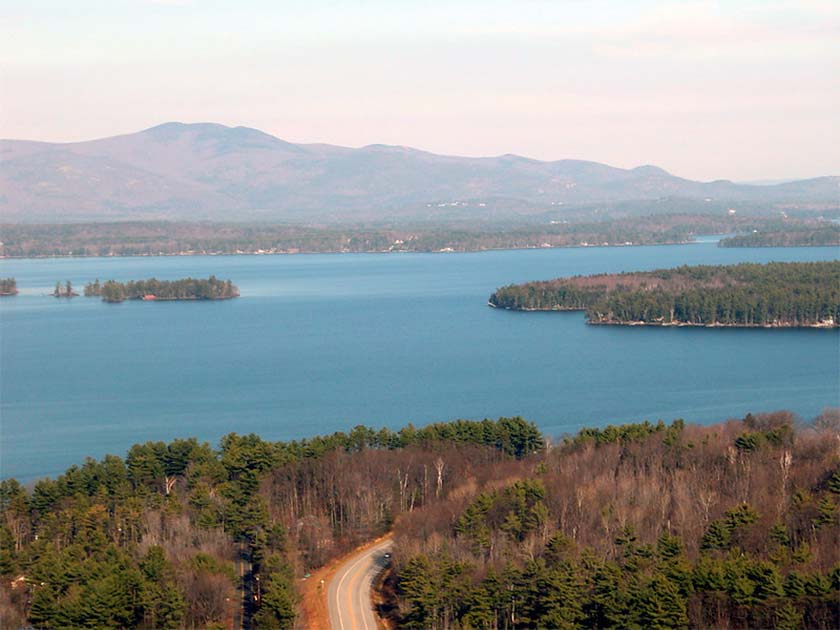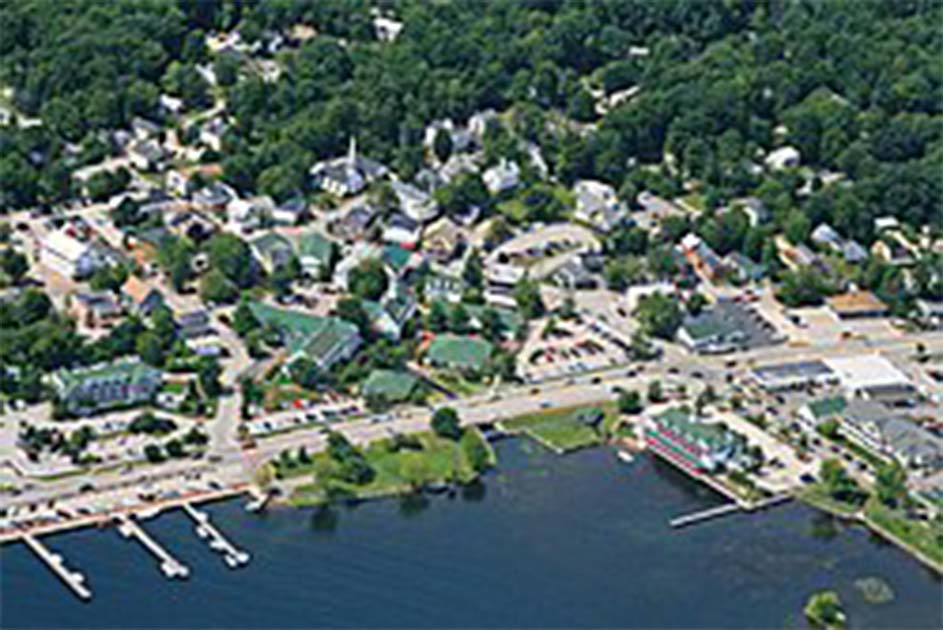In 1872, laborers excavating for a fence post near Lake Winnipesaukee in New England unearthed a clay lump, six feet underground, which enclosed an egg-shaped artifact. Known as the ‘Mystery Stone’, this artifact is amongst the lesser-known yet intriguing relics of New Hampshire. For more than a century, both amateur and professional archaeologists have pondered the origin of this peculiar artifact, but no definitive answers have been found.
The type of rock from which the artifact is made is not native to New Hampshire, and no other objects with similar markings or design have been found within the United States. The intricate craftsmanship suggests that it might have been created by someone from a distant place and time, as nothing of similar quality has been seen in the work of local Native American tribes.
Mysterious Symbols on the Lake Winnipesaukee Mystery Stone
The stone egg measures approximately 4 inches (10.2 cms) in length and 2.5 inches (6.4 cms) in thickness, weighs eighteen ounces (510.3 grams), and has a dark hue. As hard as granite, it closely resembles a goose egg in size and shape.
The stone is a quartzite variant, originating from sandstone or mylonite, a fine-grained rock created by the displacement of rock layers along faults. Holes have been bored into both ends of the stone, drilled through from end to end with different sized tools, and the surface has been polished.
In addition to its unusual construction and design, the stone is adorned with peculiar carvings that include astronomical symbols and a human face. One side features what seem to be inverted arrows, a dotted moon, and a spiral. Another side displays an ear of corn with 17 kernels. On the underside, there’s a circle containing three figures, one resembling a deer’s leg and another a large-eared animal. The “third” side depicts a tepee with four poles, an oval, and a human face. The face is recessed with a nose that doesn’t protrude beyond the surface of the egg and lips that seem to give a meaningful expression.

The artifact was discovered by workers employed by Seneca A. Ladd, a local businessman. Upon its initial unveiling, the American Naturalist journal labeled it a “remarkable Indian relic”. Records and newspaper articles reveal that Seneca Ladd owned the “egg” by 1872, and it was significant enough to be included in the county history book by 1885. After Ladd’s death in 1892, one of his daughters, Frances Ladd Coe, donated the stone to the New Hampshire Historical Society in Concord in 1927. There, it was categorized separately from the Native American artifacts of the 1800s and items of contemporary interest.
Could the Mystery Stone be a Native American “Birth Stone?”
Historians have tried to ascertain the stone’s purpose over the years, but no definite answer has been reached. Early interpretations started with the simplest hypothesis. In November 1872, The American Naturalist proposed that the stone was a “commemoration of a treaty between two tribes”. This theory, however, was short-lived and was later replaced by the supposition that the stone was an ancient tool.
There have also been theories suggesting Celtic or Inuit origin for the egg. In 1931, a letter to the New Hampshire Historical Society proposed that it was a “thunderstone”, a worked stone object believed to have fallen from the sky, often associated with a thunder god. The letter writer observed that such objects frequently appear to have been hand or machine worked and are often found deep in the earth, encased in clay lumps, or even enveloped by solid rock or coral.
Joe Graveline, an indigenous historian, proposed a unique purpose for the Mystery Stone. In a 2018 interview with the Greenfield Recorder, he suggested it could be a Native American birth stone. According to the Greenfield Recorder, a birth stone is “a stone heated and internally placed in a pregnant woman by midwives to relax muscles during difficult deliveries.”
Graveline thinks this specific stone would have held a special status, used by a Native American midwife to assist a mother in delivering a child destined to become a revered spiritual or governmental leader of either gender. He also posits that it was likely a grave offering, and had the workers dug a bit further, they would have found bones.
Precisely Drilled Holes
A notable aspect of the Mystery Stone’s construction is the pair of holes drilled in both ends with different size bits, each hole straight and not tapered. Analysis by New Hampshire state officials in 1994 revealed scratches in the lower hole, suggesting it had been placed on a metal shaft and removed multiple times. State archaeologist Richard Boisvert opined that these holes are remarkably uniform:
“I’ve seen a number of holes bored in stone with technology that you would associate with prehistoric North America. There’s a certain amount of unevenness and this hole was extremely regular throughout. What we did not see was variations that would be consistent with something that was several hundred years old.”
Regretting the lack of contextual details about the stone’s discovery, Boisvert posited that the holes were likely drilled using power tools, not traditional Native American methods. He suggested that the holes could have been drilled in the 19th century, which might imply the artifact had been tampered with. This has led some to theorize that the mystery of the Winnipesaukee stone is nothing more than an elaborate hoax.

The only point of agreement seems to be that the artifact was created using some form of machinery. However, the reality remains that no one knows who crafted the object, or when or why it was made.
At one point, the Mystery Stone captured the fascination of the scientific community, with the Smithsonian Institution in Washington D.C. offering to send a map to Seneca A. Ladd for making a casting of the egg.
Currently, the Lake Winnipesaukee Mystery Stone is displayed in a case at the Museum of New Hampshire History, with mirrors surrounding it to highlight its unique and cryptic features.
Top Image: The three faces of the Lake Winnipesaukee Mystery Stone, New Hampshire, USA. Source: John Phelan / CC BY-SA 3.0.
By Bryan Hill